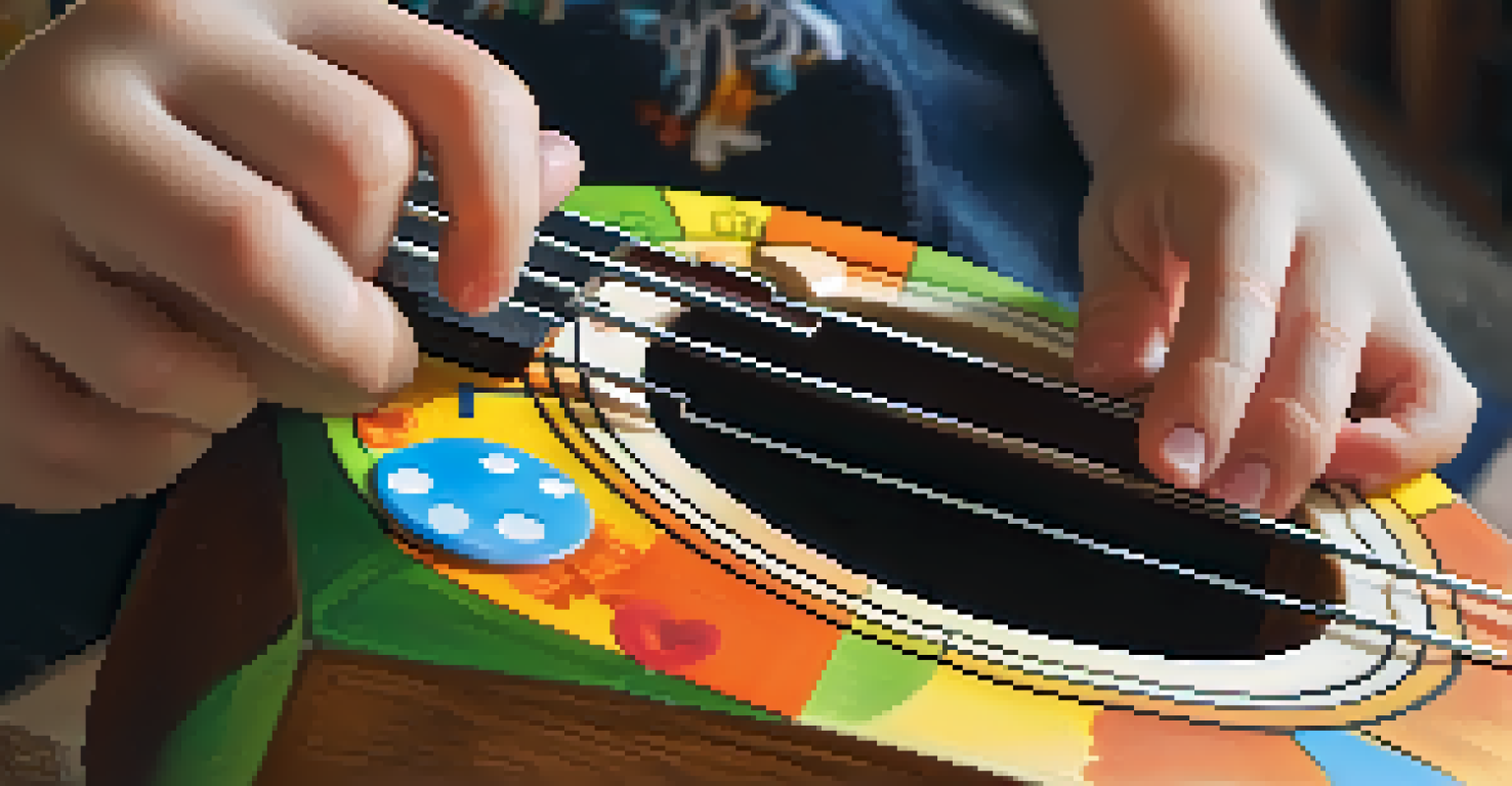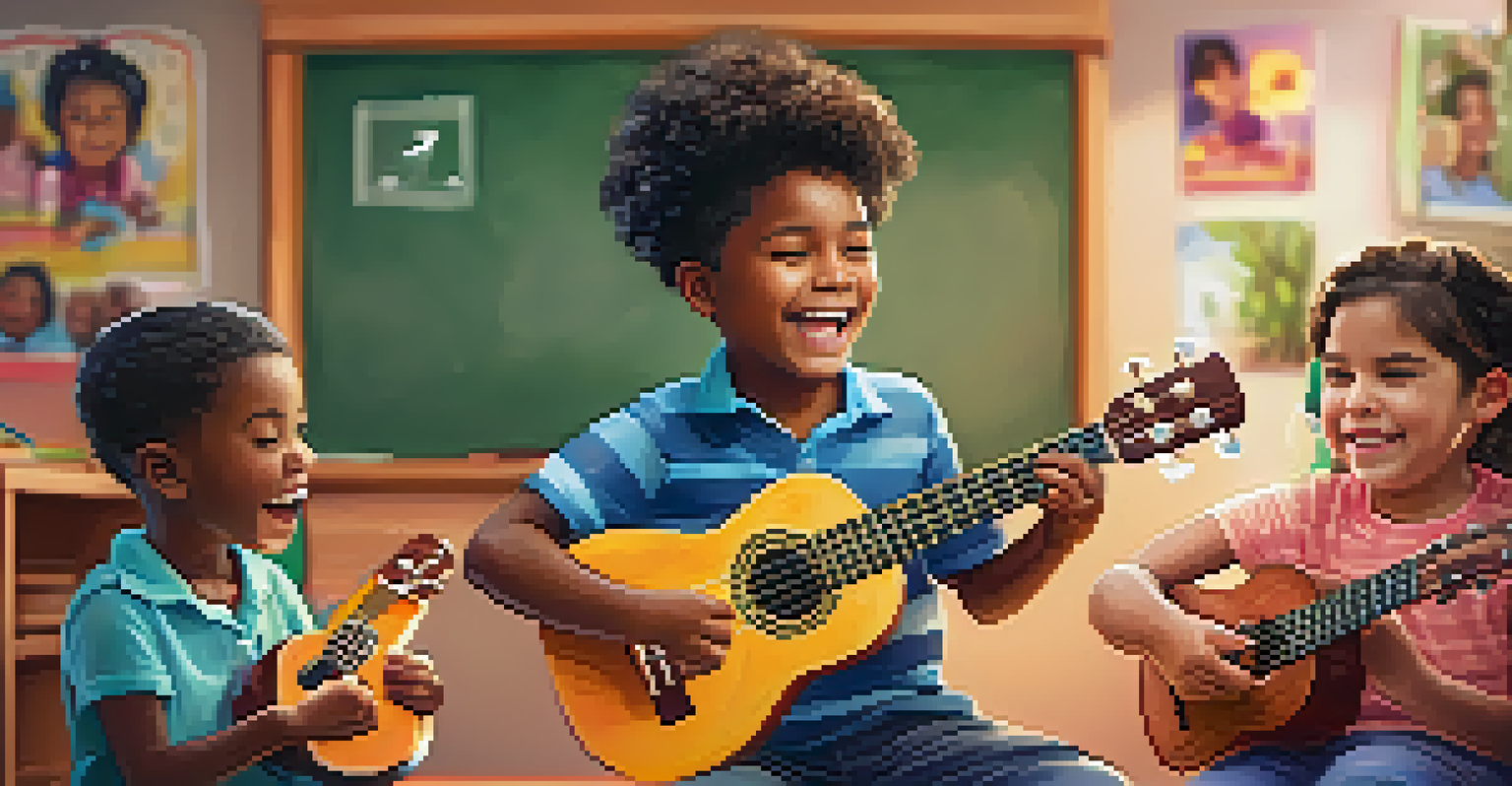5 Easy Ukulele Chords for Kids to Learn and Enjoy

Why Ukulele is Perfect for Kids to Start Learning Music
The ukulele is a fantastic instrument for kids because it's small, lightweight, and easy to handle. Its cheerful sound can instantly lift spirits, making it fun to play. Plus, with just four strings, it’s less daunting than other string instruments like the guitar, which can have six or more.
Music can change the world because it can change people.
Learning the ukulele helps kids develop their musical ear and rhythm skills. It’s a great way for them to express themselves creatively, and the simplicity of the instrument encourages experimentation. As they progress, they'll gain confidence, which is an important part of their musical journey.
Finally, playing the ukulele can be a fun group activity. Kids can easily share their music with friends and family, creating a supportive environment. This social aspect helps to build camaraderie and makes learning even more enjoyable.
The C Major Chord: The Gateway to Ukulele Playing
The C Major chord is often the first chord beginners learn on the ukulele. It’s simple to play and requires only one finger, making it perfect for small hands. To play it, just place your ring finger on the third fret of the A string, and strum all four strings.

Once kids master the C Major chord, they can start playing a variety of songs. Many popular tunes are built around this chord, allowing them to feel accomplished right away. It’s like opening a door to a whole new world of music.
Ukulele: Ideal for Young Musicians
The ukulele's small size and cheerful sound make it an engaging and accessible instrument for kids to learn.
Encouraging kids to experiment with strumming patterns while playing the C Major chord can spark their creativity. They can try soft strums, loud strums, or even fingerpicking! This exploration can help them develop their own unique style.
The G Major Chord: Expanding Musical Horizons
The G Major chord adds a touch of brightness to any song and is a great follow-up to the C Major. To play G Major, kids need to use three fingers, which may seem tricky at first but becomes easier with practice. They’ll place their index finger on the second fret of the C string, middle finger on the second fret of the A string, and ring finger on the third fret of the E string.
The beautiful thing about learning is that no one can take it away from you.
This chord opens up a whole new range of songs for young players. Many children’s songs and popular hits use the G Major chord, allowing them to play along with their favorite tunes. It’s a rewarding experience that keeps them motivated.
Encouraging kids to transition between C Major and G Major can help improve their finger dexterity. This practice not only builds their confidence but also strengthens their muscle memory, making them more versatile players.
The F Major Chord: A Simple Addition to the Chord Family
The F Major chord is another easy chord for kids to learn, and it serves as a great bridge to more complex chords. To play F Major, they only need to use two fingers: the index finger on the first fret of the E string and the middle finger on the second fret of the G string. This simplicity encourages kids to practice regularly.
F Major can be used in countless songs, making it a valuable addition to their repertoire. It pairs well with both C Major and G Major, allowing children to play a variety of tunes. The more chords they know, the more songs they can enjoy!
Chords Unlock Musical Possibilities
Learning simple chords like C Major and G Major allows kids to play a variety of songs, fostering confidence and creativity.
Encouraging children to play along with a recording can spark their enthusiasm. They can strum along to their favorite songs while practicing the F Major chord, which makes learning feel less like a chore and more like a fun activity.
The A Minor Chord: Adding Depth to the Sound
The A Minor chord introduces a slightly different sound, enriching the musical experience for kids. To play A Minor, children only need to place their middle finger on the second fret of the G string. This makes it a quick and easy chord to learn and incorporate into their playing.
This chord can add emotional depth to songs, allowing kids to explore different musical expressions. It’s fascinating for them to hear how a single chord change can alter the mood of a song. Understanding this concept can deepen their appreciation for music.
Encouraging kids to create their own songs using the A Minor chord can be a fun and creative challenge. This allows them to experiment with melodies and lyrics, fostering their imagination and musical skills.
The E Minor Chord: A Little Challenge for Growth
The E Minor chord might be slightly more challenging, but it’s a great way for kids to push their boundaries. To play E Minor, they’ll need to use three fingers: index finger on the second fret of the A string, middle finger on the third fret of the E string, and ring finger on the fourth fret of the C string. With practice, they’ll become more comfortable with this chord.
Learning the E Minor chord helps kids improve their finger placement and coordination. It’s important for their growth as musicians to tackle new challenges, and this chord is a perfect stepping stone. The sense of accomplishment they feel after mastering it is invaluable.
Practice Tips for Young Players
Establishing a consistent practice routine and incorporating fun challenges can enhance kids' learning experiences with the ukulele.
Encouraging kids to use the E Minor chord in combination with other chords they've learned can lead to exciting musical discoveries. They can create new sounds and variations, helping them develop their own unique style.
Tips for Helping Kids Practice Ukulele Chords Effectively
To help kids practice their ukulele chords effectively, setting a consistent practice schedule can be beneficial. Even just 10-15 minutes a day can lead to noticeable progress. Keeping the practice sessions short and fun will prevent kids from feeling overwhelmed or bored.
Incorporating games and challenges into practice can keep kids engaged. For example, they can have a friendly competition to see who can switch between chords the fastest. This makes practice feel less like a chore and more like an enjoyable activity.

Lastly, celebrating their achievements—no matter how small—can boost their confidence and motivation. Whether it’s mastering a new chord or playing a simple song, recognizing their progress can encourage them to keep learning and exploring the wonderful world of music.
Encouraging a Love for Music Through Ukulele
Learning to play the ukulele can be a wonderful way for kids to develop a lifelong love for music. By starting with simple chords, they’ll feel a sense of accomplishment quickly, which is essential in nurturing their passion. Encouragement and support from family can make the experience even more enjoyable.
As they progress, kids will likely want to explore different genres and styles of music. The ukulele is versatile, allowing them to experiment with everything from pop to folk. This exploration can lead to a deeper appreciation for music as a whole.
Ultimately, the joy of playing the ukulele lies in the freedom of expression it offers. Encouraging kids to play, create, and share their music can foster creativity and confidence, setting them on a path to a lifelong love for music.